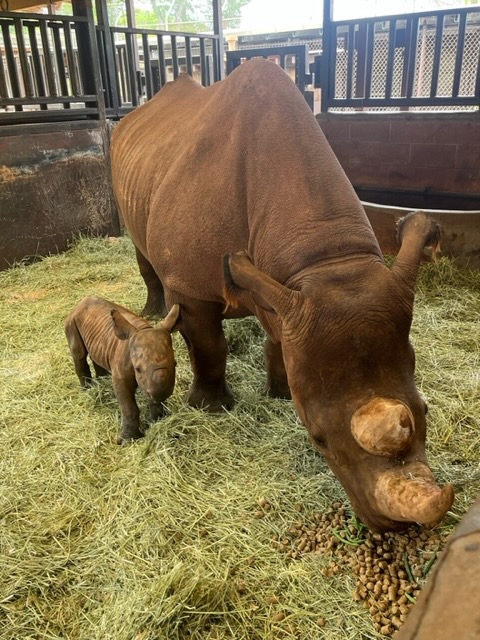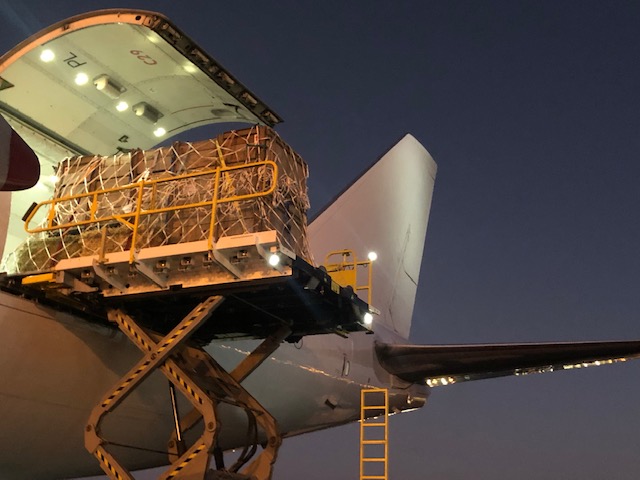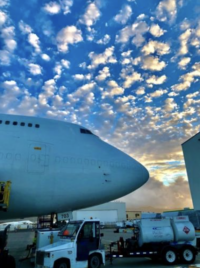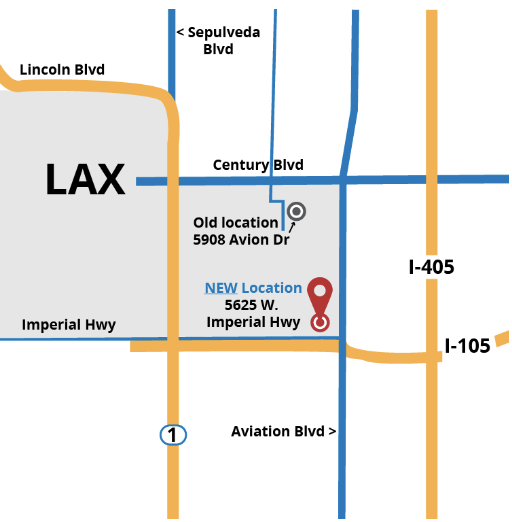The Honolulu Zoo has announced the arrival of a new baby Eastern black rhinoceros born on Wednesday, April 19, 2023. Pacific Air Cargo is proud of their role, transporting the parents, Aria (mother) and Kendi (father) from California to...
The Honolulu Zoo has announced the arrival of a new baby Eastern black rhinoceros born on Wednesday, April 19, 2023. Pacific Air Cargo is proud of their role, transporting the parents, Aria (mother) and Kendi (father) from California to Honolulu last September and November. The male baby is the first offspring of the rhino couple. These parents were identified as a breeding pair as a part of the Association of Zoos and Aquariums (AZA) Species Survival Plan (SSP).
“We are all so thrilled with the very first birth of a rhinoceros at the Honolulu Zoo,” said Honolulu Zoo Director Linda Santos. “We celebrate a successful SSP pairing and are very fortunate to have sucha special educational opportunity for our staff to observe Aria throughout her pregnancy and delivery.”
The calf weighs approximately 50 pounds, 1/50th of Aria’s weight of 2,600 pounds, and is nursing well. He is curious, displays a playful personality, and stays close to his mother. The baby has not yet been named — a name will be chosen at a later date. Until the family can be safely integrated, Aria and her calf will share one half of the rhino exhibit while Kendi will occupy the other half.
“It is always so thrilling to be a part of the Honolulu Zoo’s growth and sustainability efforts,” stated Tanja Janfruechte, Pacific Air Cargo CEO. “Pacific Air Cargo is honored be a partner in those efforts through the transportation of the rhino parents.”
 The critically endangered Eastern black rhino is the smaller of the two African rhino species, the other being the white rhino. They are up to five feet at the shoulder, approximately 12 feet in length, and weigh up to 3,000 pounds. These rhinos have three toes, thick dark brown to gray colored skin, and two fibrous keratin horns. They are best distinguished from the white rhino by their pointed, rather than square upper lip. These black rhinos are reported to live up to 35 years in the wild and up to 50 years in human care.
The critically endangered Eastern black rhino is the smaller of the two African rhino species, the other being the white rhino. They are up to five feet at the shoulder, approximately 12 feet in length, and weigh up to 3,000 pounds. These rhinos have three toes, thick dark brown to gray colored skin, and two fibrous keratin horns. They are best distinguished from the white rhino by their pointed, rather than square upper lip. These black rhinos are reported to live up to 35 years in the wild and up to 50 years in human care.
Kendi can currently be seen on exhibit in the African Savanna near the play apparatus at the Honolulu Zoo. Aria and her baby are expected to venture out on exhibit within the next couple of months. Visitors are welcome to take a peek at the rhino family and are encouraged to be respectful while viewing and taking photos.
The post Pacific Air Cargo Deliveries Pay Off in New Baby Rhino appeared first on Pacific Air Cargo.











